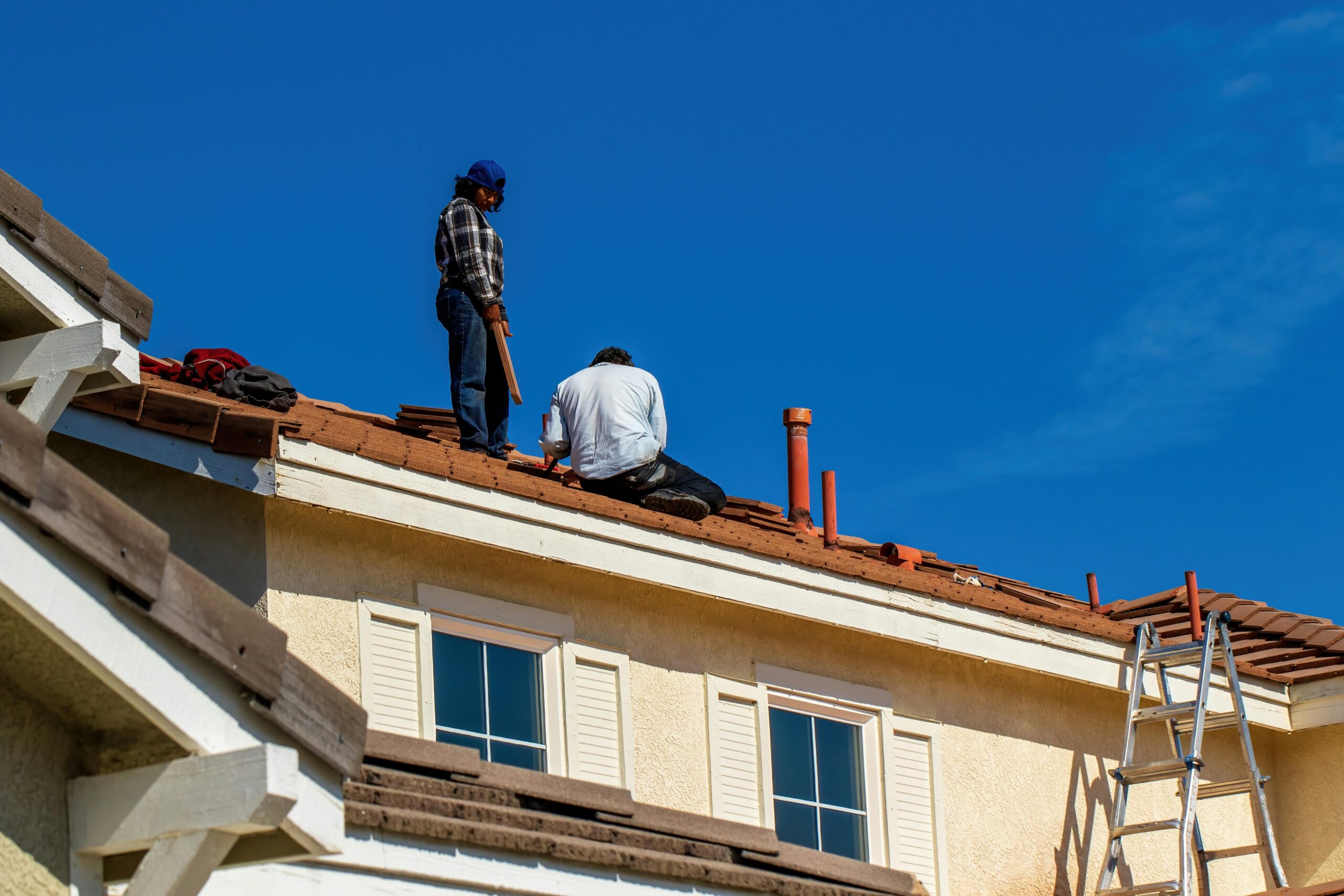When severe weather strikes, your roof often bears the brunt of nature’s fury. Sudden roof damage from hailstorms, high winds, or falling trees can leave your home vulnerable to water intrusion and subsequent interior damage. While professional assessment and repairs are ultimately necessary, the immediate hours after storm damage are critical for preventing further complications. This guide outlines practical emergency roof repair tips you can implement while waiting for professional help to arrive, helping you minimize water damage and protect your home’s structural integrity.
Assessing Your Storm Damaged Roof Safely
After a storm passes and conditions are safe, conducting a preliminary after storm roof assessment is crucial. Begin by examining your home’s interior for signs of water infiltration – water stains on ceilings, dripping water, or damp walls can indicate roof damage. Next, if possible, survey your roof from ground level using binoculars. Look for missing or damaged shingles, damaged flashing around chimneys or vents, and visible holes. Remember that climbing onto a storm damaged roof is extremely dangerous and should be avoided. Roof structures may be compromised and unstable, especially if trees or large debris have impacted the roof surface. Document visible damage with photographs from safe positions for insurance purposes before attempting any temporary fixes.
Interior Emergency Actions to Minimize Water Damage
When dealing with an actively leaking roof, your first priority should be to minimize water damage to your home’s interior. Place buckets or containers under leaking areas to collect water. If water is pooling on ceilings, carefully puncture the center of the bulge with a screwdriver to release the water in a controlled manner, preventing ceiling collapse. Move valuable items, electronics, and furniture away from leak areas. Cover immovable items with plastic tarps. For extensive leaking through multiple areas, consider shutting off electricity to affected rooms to prevent electrical hazards. These immediate actions can significantly reduce interior damage while you prepare more substantial temporary roof leak fixes.
Temporary Roof Leak Fix Techniques
Several methods can help temporarily stabilize roof damage until professional help arrives. For small, identifiable leaks, roofing cement or roofing tape applied from inside your attic can provide short-term sealing. Apply these materials directly to the underside of roof decking where leaks are visible. For more substantial damage, a properly installed tarp can be highly effective. Select a tarp that extends at least 4 feet beyond damaged areas in all directions. Secure it with 2×4 lumber rather than nails, which create additional holes in your roof. Place one board along the peak with the tarp wrapped around it, and use additional boards along the tarp edges. As experts at AskHomey recommend, never attempt these temporary fixes during storms or high winds, and prioritize your safety above all else.
Working With Your Insurance Provider
Document all damage thoroughly before implementing emergency roof repair measures. Take dated photographs and videos from multiple angles, focusing on all visible damage. Contact your insurance provider immediately to report the damage and initiate the claims process. Most policies have specific timeframes for reporting storm damage. Request their protocol for emergency repairs – many insurers expect homeowners to take reasonable steps to prevent further damage. Keep all receipts for materials purchased for temporary repairs as these may be reimbursable. Detailed documentation of both the damage and your mitigation efforts will strengthen your insurance claim when professional assessment occurs.
When and How to Call Professional Roofers
While temporary measures help minimize water damage from a leaking roof, professional repairs are essential for restoring your roof’s integrity. Contact reputable roofing companies immediately after securing temporary fixes. During peak storm seasons, professional roofers often prioritize cases based on severity, so clearly communicate the extent of your damage when calling. Ask about their emergency response protocols and timeline expectations. When selecting emergency roofing services, verify credentials, insurance coverage, and inquire about warranties for emergency work. Experienced professionals will not only repair visible damage but also identify hidden issues that could cause problems later. They’ll conduct a comprehensive roof inspection that goes beyond obvious damage points, ensuring all storm impacts are properly addressed.
Preparing for the Professional Repair Team
Before professional roofers arrive, take steps to facilitate their work. Clear your driveway and areas around your home to allow for equipment access and debris removal. Secure pets in safe areas away from work zones. If possible, move vehicles away from the house to protect them from falling debris during repairs. Inside your home, remove fragile items from walls and shelves in rooms beneath repair areas, as hammering and other repair activities can cause vibrations. Cover attic contents with tarps if roof decking is exposed, as dust and debris may fall during the repair process.
For more tips and to connect with reliable home service professionals, follow AskHomey on Facebook and Instagram.



